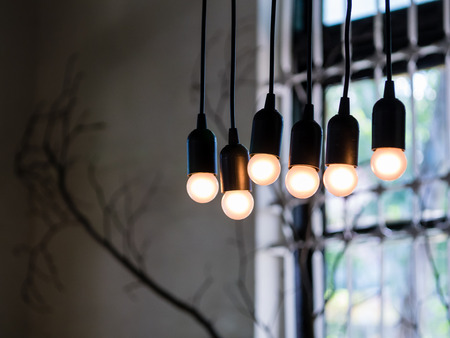Introduction to Statement Lighting
If you’ve spent any time flipping through glossy shelter magazines or scrolling the latest home tours on Instagram, chances are you’ve noticed that statement lighting is having a major moment in American interiors. More than just a source of illumination, statement lighting has evolved into an essential design element—a bold fixture that sets the tone for entire rooms. Whether it’s a sculptural chandelier in a mid-century living room or an oversized industrial pendant in a modern farmhouse kitchen, these eye-catching pieces do more than light up a space; they bring personality and drama, sparking conversation and drawing the eye upward. As American homeowners become bolder and more experimental with their décor choices, mixing and matching statement lighting with other design elements has unlocked endless creative possibilities. This new approach invites us to think outside traditional boundaries and use lighting as a tool for self-expression and style storytelling within our homes.
2. Choosing the Perfect Statement Piece
When it comes to mixing and matching statement lighting with other design elements, selecting the right standout piece is like finding the soul of your space. Forget fleeting trends—focus on lighting that tells your story and complements your home’s unique character. Begin by identifying what mood you want to set: Are you after a touch of mid-century swagger, some industrial edge, or perhaps a dash of Art Deco glam? Each style brings its own flavor, but the real magic happens when your statement fixture feels like it truly belongs.
To help guide your decision, consider these key aspects:
| Element | Considerations | American Style Tips |
|---|---|---|
| Size & Scale | Match fixture size to room proportions for visual harmony. | Big rooms love bold chandeliers; cozy nooks shine with quirky pendants. |
| Material | Select finishes that echo or contrast existing decor. | Mix brass with farmhouse wood or chrome with urban loft vibes. |
| Color & Finish | Keep colors in sync or use lighting as a pop of contrast. | Classic black works anywhere; go vibrant in eclectic spaces. |
| Functionality | Consider if you need ambient, task, or accent lighting. | Pendants over kitchen islands are pure Americana utility-meets-style. |
Don’t just shop for what’s “in”—seek out fixtures that mesh naturally with your furniture, art, and architectural quirks. Think of your lighting as both an anchor and an accent: a conversation starter that also pulls everything together. Ultimately, choosing the perfect statement piece means listening to your gut and letting your personality light up the room—literally and figuratively.

3. Balancing Light Fixtures with Furniture
When it comes to mixing and matching statement lighting with other design elements, achieving balance is key—especially between your standout light fixtures and the furniture that anchors your space. In American interiors, where open concepts and layered looks are all the rage, it’s crucial to ensure your bold pendant or sculptural chandelier doesn’t overpower your sofas, coffee tables, or architectural features.
Consider Proportions and Placement
Start by sizing up your room. A massive light fixture might look stunning in a showroom, but above a petite loveseat or slim console table, it can feel out of place. Instead, take cues from your furniture: If you have an oversized sectional, go big with a dramatic fixture. For more modest pieces, opt for lights that complement rather than compete. Remember, the goal is harmony—not a lighting takeover.
Create Visual Flow
Statement lights should guide the eye through the space without stopping it short. Place pendants above dining tables or coffee tables so they echo the shape and orientation of what’s beneath them. For example, a long rectangular table pairs beautifully with a linear chandelier, while round tables shine under globe or drum-shaped fixtures.
Mind Your Architectural Features
Don’t let bold lighting upstage original beams, fireplaces, or built-ins—these elements deserve their own spotlight. Use statement lights to enhance these features rather than mask them. For instance, install sconces on either side of a fireplace to frame it elegantly or hang a striking pendant in an entryway to draw attention upward without crowding the space.
In the end, balancing statement lighting with your furniture and architecture is all about thoughtful coordination. Mix and match with intention: Let each piece breathe while ensuring everything feels part of one cohesive—and distinctly American—whole.
4. Mixing Materials and Textures
If you want your statement lighting to truly shine, consider the art of mixing materials and textures throughout your space. In the American design scene, blending metals, glass, wood, and other natural elements is a go-to move for achieving that coveted lived-in yet luxurious vibe. It’s all about striking a balance between high style and hominess, where nothing feels too precious or out of place.
Why Mix Materials?
Layering different finishes not only adds visual intrigue but also reflects the eclectic nature of American interiors—from mid-century modern ranch homes to contemporary lofts in the city. This approach helps anchor bold lighting fixtures within a cohesive design story.
Popular Material Combinations
| Material | Pair With | Effect |
|---|---|---|
| Brushed Brass | Smoked Glass & Walnut Wood | Warm, retro-luxe feel; classic Americana with an edge |
| Matte Black Metal | Clear Glass & Reclaimed Wood | Modern farmhouse charm; crisp contrast with organic warmth |
| Polished Chrome | Marble & Linen Textiles | Sleek urban cool; softens hard surfaces for balance |
| Aged Copper | Leather Accents & Exposed Brick | Industrial nostalgia; rugged yet inviting atmosphere |
Pro Tip:
If you’re unsure where to start, let your statement lighting fixture inspire your material palette. For instance, a chandelier with mixed-metal arms can be echoed by using both brass hardware and black iron shelving elsewhere in the room.
The key is to repeat each material at least twice throughout your space for cohesion—think a brass lamp paired with brass cabinet pulls or a glass pendant echoed in a set of glass vases. By thoughtfully weaving together these elements, you’ll capture that relaxed-yet-refined American spirit where every detail feels intentional and inviting.
5. Color Coordination and Contrast
When it comes to mixing and matching statement lighting with your other design elements, color plays a starring role. Whether you’re aiming for that sun-washed coastal vibe in Malibu, a modern farmhouse feel in the Midwest, or an edgy urban loft aesthetic in Brooklyn, getting the color coordination and contrast right can transform the whole mood of a space.
Statement lighting offers a unique chance to introduce unexpected pops of color or anchor your palette with bold contrasts. Picture a matte black sputnik chandelier making waves against crisp white shiplap in a farmhouse kitchen, or sleek brass pendants casting a golden glow over deep navy cabinets in an urban apartment. Don’t be afraid to go off-script—a poppy red pendant or a turquoise table lamp can bring life to otherwise neutral spaces and reflect today’s most popular American palettes.
For those drawn to coastal cool, think soft blues, sandy neutrals, and weathered finishes. Lighting fixtures in sea glass green or driftwood tones echo the relaxed West Coast spirit. In farmhouse-inspired interiors, whitewashed metals, aged bronze, or even lantern-style lights painted in muted pastels can tie together the rustic yet refined look that’s trending from Texas ranches to New England farmhouses.
If city living is more your speed, use high-contrast color combos—like black iron fixtures paired with exposed brick or industrial grays—to create visual interest. Urban dwellers often mix retro shapes with contemporary colors, so don’t shy away from experimenting with saturated hues or graphic two-tone looks. It’s all about creating layers that feel intentional but not overly matched.
Looking for tips? Start by picking out one accent color from your furniture or artwork, then echo it subtly through your lighting choice. Or try flipping the script: let your statement light steal the show with a bold finish while the rest of your décor stays understated. The key is balance—enough coordination to feel cohesive, enough contrast to keep things dynamic and distinctly American.
6. Layering Lighting with Accessories
When it comes to mixing and matching statement lighting with other design elements, the secret sauce is all about layering. To create that cohesive, magazine-worthy look, think of your statement light fixture as the headliner and your accessories—rugs, wall art, and throw pillows—as the supporting cast. Each piece should vibe together without fighting for attention, yet still bring its own unique flavor to the space.
Start with a Focal Point
If your chandelier or bold pendant is making a big splash, let it set the tone for your accessory choices. For example, a mid-century modern sputnik chandelier pairs beautifully with geometric rugs or abstract wall art. If you’re more into boho vibes, go for an artisan-inspired pendant paired with textured throws and eclectic pillow patterns.
Play with Color and Texture
Color is your best friend here. Use your statement lighting’s finish or color as a jumping-off point for choosing rug patterns or pillow fabrics. If your light fixture features brass or gold tones, try adding accent pillows with warm metallic thread or a rug with golden undertones. Likewise, if your lamp pops in cobalt blue, look for wall art or textiles that echo this hue.
Balance Patterns and Shapes
While layering, balance bold and subtle elements so nothing feels overpowering. If your statement lighting has a dramatic silhouette—say, an oversized globe fixture—choose accessories with softer shapes or understated patterns. On the flip side, if your rug is loud and proud, pick lighting that’s sleek and streamlined to avoid visual chaos.
Create Visual Flow
To make everything feel intentional rather than thrown together, repeat design motifs throughout the room. For instance, if your lighting features circular forms, mirror those curves in round coffee tables or oval-shaped wall decor. The goal is to guide the eye smoothly from one element to another so the space feels harmonious yet visually interesting.
Don’t Forget Comfort
At the end of the day, great design is about creating spaces where people want to linger. So while you’re curating that perfect mix of lighting and accessories, remember to keep things cozy—think plush rugs underfoot and inviting throws on hand. When all these layers come together just right, you’ll have a space worthy of any glossy home magazine—and more importantly, one that truly feels like home.
7. Embracing Trends Without Overdoing It
When it comes to mixing and matching statement lighting with other design elements, there’s a fine line between trendy and overwhelming. Statement lighting is designed to turn heads—think bold chandeliers, sculptural pendants, or retro-inspired lamps. The trick is letting your chosen fixture take center stage while the rest of your décor plays a supporting role. To keep things balanced and stylish, pair that eye-catching light with more understated furniture, neutral palettes, or subtle textures. For example, if you’ve got a geometric mid-century pendant over your dining table, try grounding the space with classic wooden chairs or a simple vintage rug. Accessories should echo the vibe of your statement piece without competing for attention—think muted ceramics, sleek metallics, or soft textiles that complement rather than clash. In true American style, mixing old and new creates a space that feels curated but not contrived. Resist the urge to pile on too many trends at once; instead, let your lighting lead the way and use small accents to nod to current styles. This approach keeps your home feeling fresh and current, but never like you’re trying too hard. Remember: real style is all about balance—let your statement lighting shine while everything else whispers in support.


